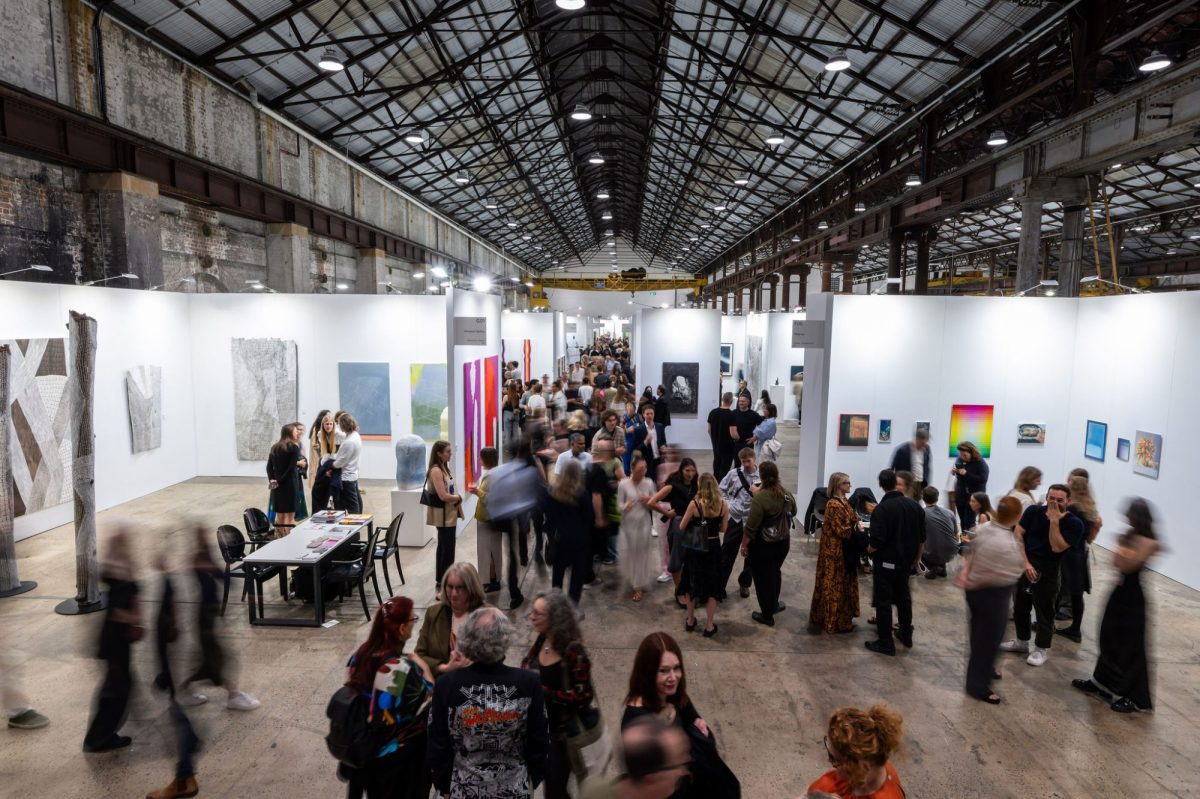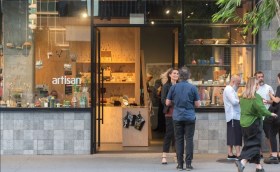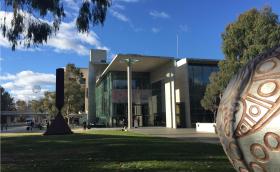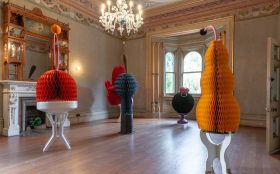I’m just another gallerist who showed at Sydney Contemporary art fair. I am not a ring master, I am not an art mogul. I am just a gallerist who loves art, shows it daily and enjoys a healthy commercial art business, and I have read with interest all of the reviews about the financial success of last week’s Sydney Contemporary.
In this article
As a gallery owner for some 20 years, and having shown at some 25 national art fairs around Australia and 12 international art fairs, numerous pop-ups around Australia and staged around 300 exhibitions in our Melbourne gallery, I thought I’d put my humble opinion in about what it’s really like at an art fair today.
The reviews talk about the huge financial success of the Sydney Contemporary art fair and sometimes criticise the minimum talent at the fair. (The fair officially reported more than $17.5 million in sales.) But I often feel these reviews, well, they miss something! And that something is the heart of the fair.
Something magical happens at an art fair that, perhaps, unless you are sitting there for five days for 12 to 15 hours, you may not see. It is the sense of a community coming together for one reason – we all love art in its ridiculously varied forms, and believe in it, or else we would not be there.
No one tells a gallerist that over one-third of sales won’t cover costs, and that they will spend the rest of the month working overtime to pay for their stand.
Gallery directors believe strongly in the artists they are showing, or they would not have invested a huge amount to be there (some stands spend over $120,000 and have rooms dedicated to coffee machines and bars alongside the art).
Me? Well, I cut the cloth and I go for a stand (art fair booth) that my business can afford, and let the art lead. I don’t shoot long video ads or have celebrity influencer endorsements, and I don’t know many people in Sydney, but I hang on to a belief that, if the art is good, then good collectors will find us amid a fair of 88 galleries.
The artists first
Let’s begin with the artists. There are hundreds of artists at a fair – the good, the bad, the want-to-be and the international successes. This is also where you have artists meeting artists. When you have been locked up alone in a studio for a year or more making the work for an art fair, to have it finished and hung and be free to meet other artists, is just pure joy. The isolation, bravery and sheer cost of being an artist in this country means that when they finally get to see each other at a fair they are so relieved – not to mention these are usually the elite of the artists selected by their galleries, so best meeting best is a joy to behold.
The sector
I delight at seeing senior curators and the directors of institutions from around Australia meet each other, and I watch them stop and hug each other out of respect for the other’s craft and achievements, which are whispered openly.
I smile as I watch the “newbies” – the first-time galleries showing at the fair – all so anxious about their sales, and I hear myself saying to each, ‘It’s going to be OK; geez I’ve had fairs where I didn’t sell a thing,’ and watch them visibly relax.
No one tells a gallerist that over one-third of sales won’t cover costs, won’t sell and that they will spend the rest of the month working overtime to pay for their stand. It does not say in the press, or the fair handouts, that the new galleries have often driven their art to the venue (sometime interstate), that the artists and gallerists will camp at other artists’ houses, and the gallery owner is praying to just cover the stand costs.
The collectors
Then there are the collectors. I watch the learned collectors like an eagle, to ascertain what they’re buying, and they always know what price they want to pay. I equally watch the young new collectors hanging onto every word, as I try to teach them how to buy art. It always makes me smile, because I know most will never develop an eye, and will only follow their decorator or art consultant, who takes 10% of every transaction.
The art consultants, fair ambassadors and interior designers we call “the 10 percenters”, are a nice group who all love art and shuffle groups of various sizes around. When I have shown at Art London or Photo Basel, these groups are the biggest groups, and they are the most important for a gallery. They are definitely the way we are headed, as most would-be collectors seem too busy to find the art they will look at for the rest of their lives themselves.
My gallery has just had one of our most successful fairs thus far. We are still selling from the work we exhibited at the fair, and I leave for Amsterdam Art Fair to do it all over again tomorrow. I can’t wait to strap on my fair security tag, meet new artists, see new work, hug directors, laugh with the art consultants and do it all again.
What reception will we receive internationally at an art fair? I suspect it will be the same, as good art always sells. What these Australian art fairs do is bring together an industry that for most of the year is so competitive, and so hungry, because we have so few collectors nationally.
Sydney Contemporary is one giant trade fair, psych session, art show and a marketing fight-off of our visual talents, and that is exactly why you will find me there next year, with a very small stand, but proudly selling outstanding art.






